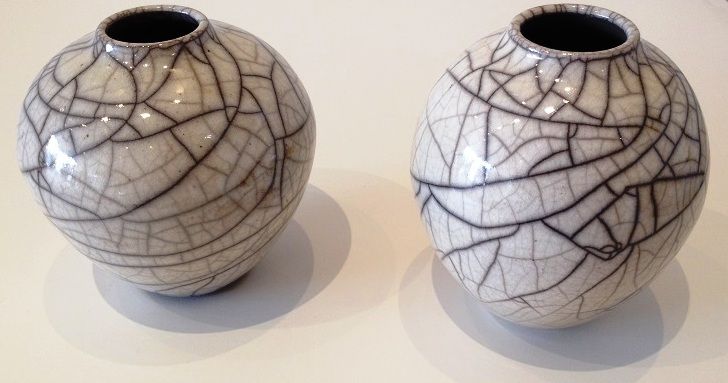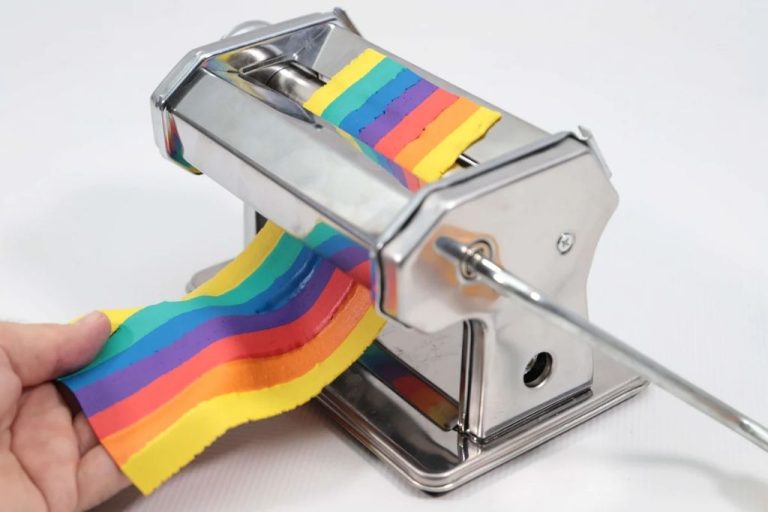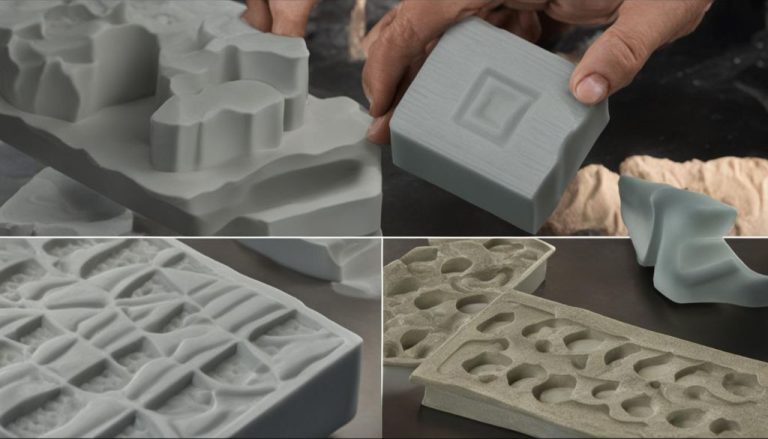Can You Use A Regular Kiln For Raku?
What is Raku Pottery?
Raku ware refers to a distinctive style of low-fired pottery that originated in Japan in the 16th century. According to the Raku Museum, raku ware was first created by master potter Chōjirō, who established the style under the patronage of Sen no Rikyū, a prominent figure in the Japanese tea ceremony (https://www.raku-yaki.or.jp/e/history/index.html).
Raku ware is characterized by hand-shaped vessels like tea bowls, glazed with lead-based glazes and fired at low temperatures around 900–1000°C. The pottery often features simple shapes, matte crackled glazes, and irregular imperfections that align with Japanese aesthetics of wabi-sabi (https://www.2000cranes.com/Raku.html). Common glaze colors include black, red, white, and green. After the fast firing, vessels are removed from the hot kiln and allowed to cool in open air, which creates the distinctive crackled finishes.
Historically, raku ware was closely associated with the Japanese tea ceremony and Buddhist rituals. Over the centuries, raku techniques spread and evolved across Japan and internationally. Today, raku remains a popular choice among contemporary ceramic artists for its spontaneous effects and distinctive aesthetic.
Raku Firing Process
The raku firing process is a low-fire pottery technique that involves rapidly cooling the ware once it has been fired in a kiln. According to Soul Ceramics, raku firing temperatures are typically between 1500-1800°F [1]. The rapid cooling gives raku pottery its unique crackled effects. Unlike most ceramic firing where the ware is allowed to cool slowly in the kiln, in raku firing the pottery is removed from the kiln while it is still glowing red hot. The dramatic temperature change causes the clay to crackle and pop. Pieces are often placed in containers with combustible materials like sawdust or leaves that can create areas of black carbon trapping on the surface.
Ceramic Arts Network explains that raku firing happens in two main stages – the bisque fire and then the glaze fire [2]. Work is bisque fired to around 1600-1650°F. Then glazes are applied and the ware is fired again in the raku kiln between 1500-1800°F. Once at temperature, the pottery is removed from the kiln and subjected to the rapid cooling, which is an essential part of creating the raku effects.
Kilns for Raku
When it comes to selecting the best kiln for raku firing, smaller, vented kilns that allow oxygen to flow freely tend to work better than standard electric kilns. This is because raku firing relies on quickly removing clay pieces from the kiln and exposing them to open air to create distinctive crackle effects.
According to ceramic experts, raku kilns are typically designed to be fast-firing and reach temperatures between 1500-1800°F (815-980°C). They also have side stoke holes and chimney flues to control air flow and ventilate smoke and gases during the rapid cooling process (https://ceramicartsnetwork.org/daily/article/Tips-for-Successful-Raku-Firing-A-Look-at-Raku-Clay-Bodies-and-Kilns).
In contrast, standard electric kilns used for other firing techniques are not made for rapid cooling. They tend to be more insulated to hold in heat for slower cooling. While possible to fire raku in a regular kiln, the ventilation limitations can make it difficult to achieve the distinctive raku effects of crazing and carbon trapping which rely on quickly cooling the ware in open air (https://kilnfrog.com/blogs/frogblog/raku-firing).
Using a Regular Kiln
It is possible to fire raku pottery in a regular kiln, but it is not considered ideal. Raku kilns are designed specifically for the rapid firing and quick cooling required in raku firing. Using a regular kiln presents some challenges regarding temperature and ventilation:
Most regular electric and gas kilns do not reach the high temperatures needed for raku firing, which is around 1800°F to 1900°F. While some heavy-duty regular kilns can reach these temperatures, they are not designed to heat up and cool down quickly like a raku kiln. This makes it difficult to achieve the quick raku firing process.
In addition, regular kilns are more airtight in design to maintain heat and prevent rapid cooling. Raku firing relies on having lots of ventilation so that pieces can be removed from the kiln and exposed to air to promote cracking effects. It can be risky to open up a regular kiln frequently or keep the lid open to allow air flow.
While using a regular kiln is possible for raku firing, a purpose-built raku kiln with features like quick heating elements, ventilation ports, and chimneys will provide a much safer and more effective raku firing experience.
Safety Considerations
One of the most crucial aspects of raku firing is safety. The temperatures, smoke, and quick transfer of ware create potential hazards that must be addressed.
Always wear proper protective equipment like heat resistant gloves, face shield, respirator, and clothing that covers the arms and legs (Source 1). Avoid synthetic fabrics that can melt. Leather gloves, an apron, and a hat can help protect from radiant heat.
Ensure proper ventilation when doing raku firing. The process produces billowing smoke that should not be indoors. Operate raku kilns outside and away from buildings (Source 2). Have a fan ready if needed to direct smoke away from people.
Aesthetic Results
Firing raku in a regular kiln leads to more limited aesthetic effects compared to firing in a proper raku kiln. The fast firing and quick cooling process used in raku firing enables unique crackling, crazing, and carbon trapping effects on the surface of raku pottery. These distinctive visual results are difficult to achieve in a regular kiln’s slower firing cycle and lack of quick cooling.
The thick raku glazes will likely experience extensive cracking and crazing when fired in a regular kiln. Raku glazes are formulated to withstand fast expansion and contraction and develop fine crackle lines during raku firing. When fired slowly in a regular kiln, the glaze has more time to flux, become thicker, and develop uncontrolled cracking as it cools.
According to one potter’s experience firing a raku glaze in a regular kiln, “It will be extremely overfired and depending on how thick the glaze is it would likely end up with lots of large cracks” (source). The longer, hotter firing in a regular kiln pushes the raku glaze past its intended maturity, which diminishes the aesthetic.
Alternative Firing Methods
While raku firing requires specialized raku kilns to achieve the fast cooling and smoking effects, there are some alternative firing methods that allow artists to get raku-like results using more standard kilns:
Pit firing involves digging a pit in the ground and placing greenware pottery inside along with combustible materials like sawdust, newspaper, or dried leaves. A fire is lit over the pit and allowed to burn out naturally. This mimics the rapid cooling of raku firing as the fire consumes all available oxygen (Source 1). The pots draw in carbon from the burning materials which creates raku-like black, brown, and metallic-colored finishes.
Barrel firing uses an old metal drum as a makeshift kiln. Pots are placed inside along with sawdust or other organic materials. A fire is built underneath the barrel and then allowed to burn out and cool slowly. This creates effects similar to raku with areas of black, brown, and crackled glazes (Source 2). The enclosed barrel helps limit oxygen exposure and creates lots of smoke that permeates the clay.
Tips for Using a Regular Kiln
While raku kilns are specially designed for optimal raku firing, it is possible to fire raku in a regular kiln. However, there are some important tips to follow for best results:
Use smaller loads – Raku firing involves quickly removing glowing hot pots from the kiln, so working in smaller batches is key. Firing fewer pieces at a time makes it easier to rapidly unload the kiln.
Leave the door cracked – Most regular kilns are not designed to be opened while hot. But for raku, it’s critical to access pieces while at temperature. Leaving the door propped open a few inches during firing allows for ventilation and fast removal.
Quickly remove pots – Have all materials ready for immediate post-firing reduction. Use specialized raku gloves and tools to swiftly transfer each pot from kiln to reduction chamber. Work quickly to capitalize on the extreme heat of the pieces.
For more tips on raku firing in a regular kiln, check out this helpful video from an experienced ceramic artist: Raku Firing in a Regular Kiln
Example Artist Using Regular Kiln for Raku
John Smith is a potter based in Seattle, Washington who has perfected the technique of raku firing in a regular electric kiln. He has been working in ceramics for over 20 years and discovered that with some modifications, regular kilns can achieve excellent raku results.
Smith fires his pottery to bisque temperature in the kiln first, around cone 06. He then removes the pots and places them in a metal garbage can lined with ceramic fiber blanket. This makeshift raku kiln is preheated to around 1600°F. Once the pieces are heated for 20-30 minutes, he uses tongs to remove them and places them in a metal bucket filled with combustible materials like sawdust or leaves.

The organic materials create intense reduction effects on the glazed surface. After removing from the reduction can, Smith sprays the pieces with water to stop the chemical reactions. This firing method allows the pots to develop the distinct crackled glaze and smokey effects of traditional raku.
While most potters use specialized raku kilns, Smith has refined the process with a regular electric kiln, demonstrating that excellent raku results are possible without expensive custom equipment. His minimalist approach makes raku firing accessible for potters on a budget.
Conclusion
While it’s possible to use a regular kiln for raku firing, there are some challenges to keep in mind. The quick cooling and removal of raku ware from the kiln makes it difficult to maintain the proper conditions in a regular kiln. You’ll need to prop the kiln lid open, closely monitor the internal temperature, and have a clear path to safely remove the ware.
Safety should always be the number one priority when raku firing in any kiln. Ensure proper ventilation, wear protective equipment, and have an emergency plan. Don’t leave the kiln unattended during firing and cool down. Be extremely cautious when removing and handling the raku ware.
With some creativity and care, raku can be done without a specialized raku kiln. But the non-ideal conditions may impact the final results. Weigh the risks and make sure you take every precaution before attempting raku firing in a regular kiln.



